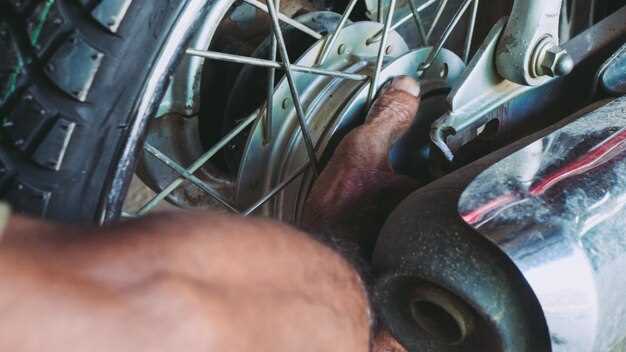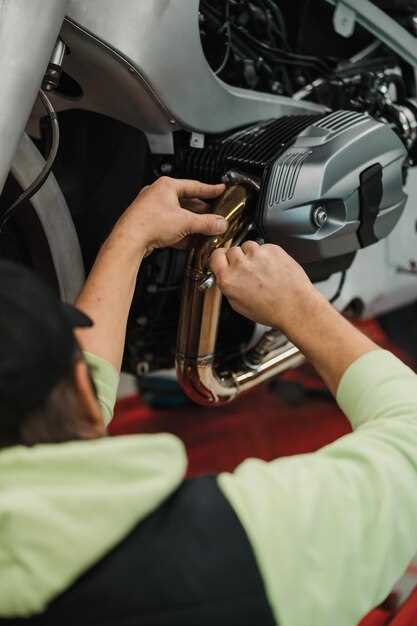
Maintaining optimal brake performance is crucial for the safety of any motorcycle rider. One key aspect of this maintenance is regularly bleeding the brakes to ensure that the brake fluid remains free of air bubbles and contaminants. Air in the brake lines can lead to spongy brakes and reduced stopping power, making it essential to understand proper bleeding techniques.
The process of bleeding motorcycle brakes involves removing air from the hydraulic brake system, which is vital for efficient operation. This task requires a careful approach, as improper bleeding can not only lead to poor performance but may also compromise rider safety. Understanding the right methods for bleeding brakes will ensure that your motorcycle operates smoothly and reliably under various riding conditions.
In this article, we will explore the necessary tools, step-by-step procedures, and tips to effectively bleed your motorcycle brakes. By adhering to these techniques, you can maintain optimal performance and extend the lifespan of your braking system, ensuring a safer riding experience.
Choosing the Right Brake Fluid for Optimal Performance

When it comes to maintaining your motorcycle’s braking system, selecting the appropriate brake fluid is crucial for ensuring optimal performance. Brake fluid plays a vital role in the function of your brakes, impacting everything from the feel of the lever to the overall safety of your ride.
There are two primary types of brake fluid: DOT (Department of Transportation) and non-DOT fluids. DOT fluids are further categorized into several grades, such as DOT 3, DOT 4, and DOT 5.1, each with different boiling points and chemical properties. For most motorcycles, DOT 4 is a popular choice due to its high boiling point and compatibility with various brake systems. However, if your motorcycle is equipped with a high-performance braking system, you may want to consider DOT 5.1 for its superior heat resistance.
It is essential to avoid mixing different types of brake fluids, as this can lead to decreased performance and potential damage to your braking system. Always refer to your motorcycle’s owner manual to ensure you are using the recommended fluid type. Additionally, be mindful of the fluid’s age; brake fluid is hygroscopic, meaning it can absorb moisture over time, which negatively affects its performance. Regular checks and bleeding your brakes should be part of your maintenance routine to ensure the fluid remains in optimal condition.
Choosing the right brake fluid is not just about following specifications; it’s about understanding how it affects your motorcycle’s brakes under various riding conditions. Investing in high-quality brake fluid can significantly enhance your braking response, ultimately contributing to a safer and more enjoyable riding experience.
Step-by-Step Guide: Performing a Brake Bleed Yourself
To ensure your motorcycle brakes function optimally, performing a brake bleed is essential. Follow these detailed steps to bleed your brakes and remove any air from the system, allowing fresh fluid to improve braking performance.
Step 1: Gather Necessary Tools
Before you start, collect the tools you will need: a wrench to fit the bleeder valve, a clear plastic hose, a container to catch the old fluid, and fresh brake fluid specific for your motorcycle make. Additionally, wear gloves and safety glasses for protection.
Step 2: Prepare Your Motorcycle
Ensure your motorcycle is on a stable surface and that the handlebars are level. If necessary, use a motorcycle stand or block to maintain stability. This makes the bleeding process easier and safer.
Step 3: Locate the Brake Caliper Bleeder Valve
Identify the bleeder valve on your motorcycle’s brake caliper. This is typically a small screw with a rubber cap. Remove the cap carefully to avoid any dirt contamination.
Step 4: Attach the Hose
Connect one end of the clear plastic hose to the bleeder valve. Ensure the other end of the hose is placed in the container to catch the fluid that will flow out during the bleeding process.
Step 5: Open the Bleeder Valve
Using the wrench, slowly turn the bleeder valve counterclockwise to open it. It’s crucial to do this gradually to prevent fluid splashing or air entering the system.
Step 6: Pump the Brake Lever
Firmly squeeze the brake lever several times, then hold it in. As you do this, watch for old fluid and air bubbles traveling through the clear hose into the container. Keep the lever held down while you proceed to the next step.
Step 7: Close the Bleeder Valve
While holding the brake lever down, quickly turn the bleeder valve clockwise to close it. This helps to trap the fluid in the system and prevents air from getting back in.
Step 8: Repeat as Necessary
Repeat steps 5 to 7 until you see a consistent stream of clear brake fluid in the hose without any air bubbles. This indicates that the air has been removed from the system.
Step 9: Check Brake Fluid Level
Periodically check the brake fluid reservoir during the process to ensure it does not run dry. If the level gets low, refill it with new brake fluid to avoid introducing air into the system.
Step 10: Replace the Cap and Clean Up
Once you have successfully bled the brakes, close the bleeder valve tightly and replace the rubber cap. Clean any spilled fluid immediately, as brake fluid can damage painted surfaces. Dispose of the old fluid responsibly.
Final Step: Test the Brakes
Before riding, pump the brake lever a few times to feel for firmness. Ensure that the brakes engage smoothly. If all feels well, your brake bleeding is complete, and your motorcycle is ready for the road.
Common Mistakes to Avoid When Bleeding Motorcycle Brakes

When bleeding motorcycle brakes, it’s essential to ensure the system functions smoothly and efficiently. One common mistake is not using the proper tools. Utilizing the wrong size of wrench or a subpar bleed kit can lead to stripped fittings or inadequate results. Always use tools specifically designed for your motorcycle’s brake system.
Another mistake is failing to check the brake fluid level before starting the process. Neglecting to add fluid can introduce air into the system, causing spongy brakes. Always start with a full reservoir to minimize this risk and ensure a consistent flow during bleeding.
Many riders overlook the importance of having assistance during the bleeding process. Bleeding brakes often requires someone to pump the brake lever while you open and close the bleeder valve. Without help, it’s challenging to maintain control of fluid flow and air evacuation, leading to potential mistakes.
Additionally, some might rush the process, believing that a quick bleed is sufficient. It’s crucial to take your time and ensure that all air bubbles are removed. A thorough process guarantees that your motorcycle brakes will perform optimally and ensures your safety on the road.
Lastly, forgetting to secure all components after bleeding is a significant mistake. Loose fittings can lead to leaks and failure in the brake system. Always double-check that all parts are tightened and secure before taking your motorcycle for a ride.
